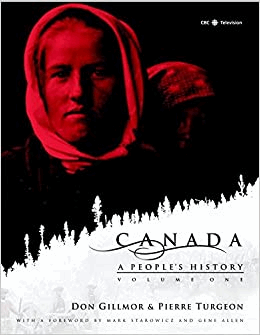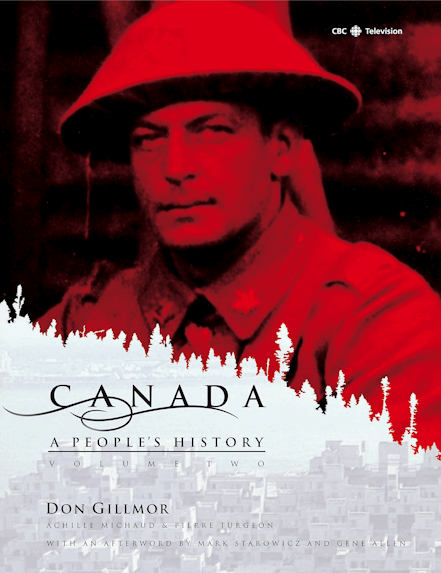
Canada: A People’s History Volume 1 (in collaboration with Don Gillmor) McClelland&Steward and Fides – 2000 – This book tells the story of Canada as never before. It is based on new research conducted for the television series of the same name, produced by the Canadian Broadcasting Corporation. It vividly evokes the rise and fall of enemy empires, the clashes between great armies, and the whirlwind of rebellions. Covering the period from the origins to 1870, it describes the audacity and, in some cases, the follies of the men and women who explored the northern part of the American continent. We meet kings and queens, missionaries, generals who devised great strategies, and simple soldiers who learned at their own expense what war could represent in terms of terror, chaos, and bloodshed. We also meet exiles and orphans, the king’s daughters, and adventurers. We witness the first contacts between Europeans and Aboriginal people. Finally, we witness the attempts to liberate the colony that led to the creation of the Confederation.

Canada: A People’s History – 2001 Volume 2 (in collaboration with Don Gillmor and Achille Michaud) McClelland&Steward and Fides This book tells the story of Canada from Confederation to the end of the 19th century in a new way. It opens with a look at the Métis rebellion in Manitoba, fighting for land and language rights led by the tormented and charismatic Louis Riel – an event that still haunts Canada today. The book closes with a less bloody but equally traumatic account of the 1990 Oka Crisis, which pitted the Mohawks against the military in a less bloody but equally traumatic manner. Between these two conflicts, more than a century has passed, marked by significant events and fruitful changes. Canadians crossed the Atlantic to fight with the Allies in both world wars; waves of immigrants poured in from every corner of the globe; the working classes struggled desperately for survival during the terrible years of the Depression. The political landscape was transformed in extraordinary ways: the emergence of nationalism in Quebec; the struggle of women for the right to vote and for equality; the creation of the universal health insurance program, probably the most appreciated social service of all. Here is a truly popular Canadian history that offers superb pages of life, the portrait in action of famous and sometimes flamboyant politicians, often unsung heroes, ordinary people in the midst of extraordinary events. This exceptional book was produced from research conducted for the television series of the same name, produced by the Canadian Broadcasting Corporation. After the immense success of the first volume, which covered the period from the origins to Confederation, this album has become the tool par excellence for discovering, getting to know, and better understanding 20th century Canada.
REVIEWS: “Published in English by McClelland & Stewart and in French by Éditions Fides, this two-volume book is richly illustrated with paintings, maps, and over 200 historical photographs. Based on research conducted as part of the series of the same name, broadcast by Radio-Canada, this book presents in an exciting way the rise and fall of enemy empires, clashes between great armies, and the turbulence of revolts. The first volume covers the period from Canada’s origins to the year 1870. The book was at the top of the Canadian bestseller list for over 15 weeks and won the Canadian Booksellers Association’s Non-Fiction of the Year Award. It also received the prestigious Libris Award in June 2001. This first installment of Canada: A People’s History begins before European contact, based on an examination of archeological records and Aboriginal creation myths, and ends more than 300 pages later at Confederation. It is a vast and diverse territory, which the book covers in a vivid style appropriate to popular history. Because of the enormity of the subject matter, Turgeon and Gillmor compress and distill, but they manage to bring the details and textures of individual experiences to life and illuminate the landscape of our past with living light. ” – Stephen Smith – Quill and Quire
